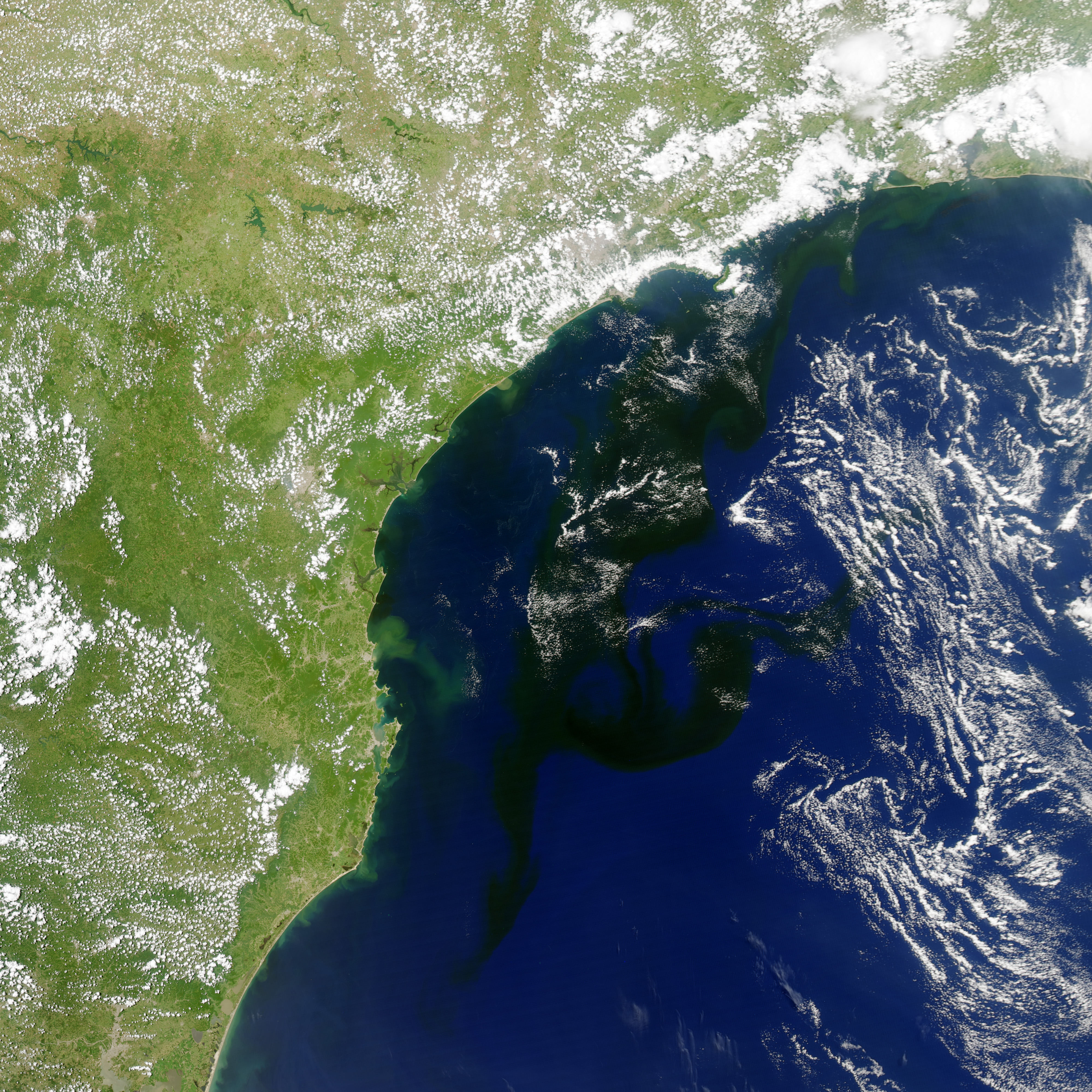As the Vitoria-Trindade Seamounts loom ahead of us, the team has begun to make adjustments to the way points as we discuss the ideal path across the mountain range ahead of us.
So far we have shifted the waypoint to having a more southern position relative to our flying path as we make our approach.

One thing we must keep in mind is that we need to remain in international waters for as long as possible along the journey. So now that we are aiming 29 due south, we now open up our options of flying between the two seamounts- taking a risk with the unfavorable bathymetry, or flying in the wider gap between seamounts and risking entering another countries waters.
Looking at our comparison of the currents, it appears that uniformly throughout the water column, there is a strong eddy signature to our immediate west that 29 is perched on- however the two models show us at slightly different positions along the north east sector of this cold core ring, resulting the current ranging from south east (RTOFS) to south west (myocean)
 MyOcean- blue 300m
MyOcean- blue 300m
RTOFS- yellow 300m
29 however is showing a surface drift closest to the myocean’s top layer as she floated to the west while at the surface. Subsurface however the resistance was to the north east.
Force Wind Sea & Honor










































